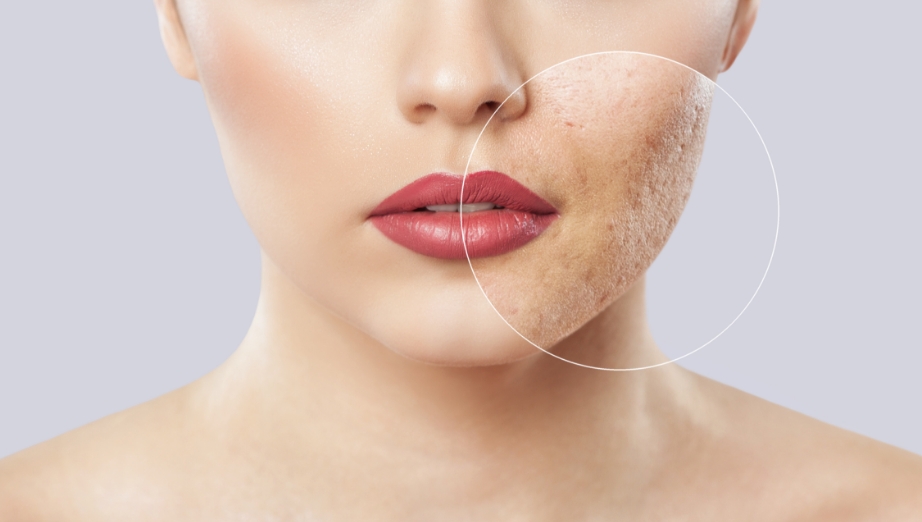Understanding Skin Texture and Scarring
Scars form as part of the skin’s natural healing process. When the skin is injured — from acne, trauma, or surgery it repairs itself by producing new collagen fibres to close the wound.
While this is essential for protection, the way the body repairs can create textural or tonal changes that differ from the surrounding skin.
A Consultation for Scar Texture & Repair provides an opportunity to understand these changes, explore the biological factors that influence healing, and discuss professional, evidence-based approaches to care, always within a medically supervised setting.
The Types of Scars
Your clinician will help you understand the different types of scars and how they behave over time. These distinctions guide how your care is planned and discussed.
● Atrophic scars: Depressed scars that form when the skin does not produce enough collagen during healing. Commonly seen after acne or chickenpox.
● Hypertrophic scars: Raised scars that stay within the boundary of the original wound, often appearing pink or firm during early healing.
● Keloid scars: Thickened scars that extend beyond the initial wound edges due to excess collagen formation.
● Contracture scars: Caused by significant skin injury, such as burns, and may tighten over time, restricting movement.
● Post-inflammatory hyperpigmentation (PIH): Not technically a scar, but a common after-effect of inflammation that leaves darkened or uneven patches once a lesion has healed.
Understanding which type of scar you have helps determine the most appropriate discussion and potential management pathways.

Factors That Influence Scarring
Multiple internal and external factors affect how scars develop and mature:
Genetics: Individual healing rates and collagen balance differ among people.
Wound depth and site: Areas under tension or movement (e.g., chest, shoulders, jawline) can heal differently.
Inflammation and infection: Prolonged inflammation can thicken or darken scar tissue.
Sun exposure: UV light can deepen discolouration during the healing process.
Lifestyle factors: Smoking, alcohol use, hydration, and sleep quality all influence tissue regeneration.
Nutrition: Vitamins A, C, and zinc support collagen formation and wound repair.
Stress and hormones: Elevated cortisol may slow or impair tissue recovery.
Understanding these factors during your consultation helps you identify what supports your own skin’s natural healing environment.
Your Consultation at Shellharbour Skin
Your consultation is a detailed, discussion-based appointment focused on assessment, education, and informed decision-making.
During this appointment, your clinician will:
- Assess the type, depth, and distribution of your scars.
- Review your medical history, medications, allergies, and relevant lifestyle factors.
- Discuss your concerns, goals, and questions.
- Explore suitable, non-surgical, and evidence-informed options.
- Explain preparation, after-care, and consent requirements.
No treatment proceeds without an appropriate clinical assessment and informed consent.
Approach Discussions
Following your assessment, your clinician may outline management or care pathways suited to your needs. These discussions are educational and focused on helping you understand safe, clinically appropriate options.
Topics may include:
- Observation or monitoring, when no intervention is required.
- Skin health optimisation, including home-care, sun protection, and hydration strategies.
- Professional skin treatments, such as fractional laser, light-based therapy, needling, or resurfacing (e.g., Alma Hybrid CO₂, Cutera Laser, Microneedling) where clinically appropriate.
- Prescribed-medication approaches, discussed only after in-person medical assessment by a qualified practitioner, and used only where clinically indicated for scar management.
- Collaborative or referred care, when input from another medical or allied professional is recommended.
Your clinician will explain the reasoning behind each recommendation, outline safety considerations, and provide clear after-care instructions.
After-Consultation Considerations
If a treatment or management plan is discussed, you will receive written information covering:
- Recovery and review timeframes
- Expected short-term effects such as redness or mild swelling
- Care guidelines for protecting the skin during recovery
When to contact the clinic for follow-up
You are encouraged to take time to review all information before making a decision.
Risks and Precautions
All clinical procedures carry potential risks. Common temporary effects may include redness, tenderness, or mild swelling. Less common risks such as irritation, bruising, or pigmentation change will be explained prior to consent.
Understanding these considerations forms an essential part of your consultation and informed consent.
Cost and Planning
Consultation fees vary based on time and complexity. Any additional planning or treatment costs are discussed only after your consultation and once clinical suitability is confirmed.
Written cost details and follow-up recommendations are provided before any service proceeds.
Important Information
- Shellharbour Skin discusses specific treatment options only within consultation.
- We do not advertise or name prescription-only medicines.
- All services follow a clinical assessment and informed-consent process.
- Experiences and healing responses vary between individuals.
- Prescription-only medicines are intended for adults aged 18 years and over.
- This content is for educational purposes and does not replace medical advice.
Practitioner Transparency
Consultations and treatments at Shellharbour Skin are provided by a multidisciplinary team:
Dermal Clinicians – qualified professionals who are not registered under AHPRA but hold tertiary qualifications in dermal science or dermal therapies. They provide skin consultations and treatments within their professional scope and under clinical supervision.
Registered Nurses – AHPRA-registered health practitioners who provide skin and aesthetic treatments within their clinical training and scope of practice.
Medical Practitioners – AHPRA-registered doctors experienced in skin health and aesthetic medicine who oversee and support all clinical services.
When clinically appropriate, a medical practitioner may prescribe medications following in-person assessment and in accordance with legal and professional standards.
All care is provided in a medically supervised environment, ensuring patient safety, clinical suitability, and adherence to evidence-based standards. You can verify registration for medical practitioners and nurses at ahpra.gov.au
Frequently Asked Questions
Are all scars the same?
No. There are several types of scars, each with unique characteristics:
Atrophic scars – shallow or depressed scars (common after acne).
Hypertrophic scars – raised scars that remain within the wound boundary.
Keloid scars – thickened scars that extend beyond the original injury site.
Contracture scars – often from burns, may tighten or restrict movement.
Post-inflammatory hyperpigmentation (PIH) – darkened or uneven skin after inflammation, not a true scar but a common after-effect.
Identifying your scar type helps your clinician plan appropriate, evidence-based discussions and care options.
What factors affect how scars heal?
Scar formation is influenced by genetics, wound depth, and how inflammation is managed.
Additional factors include:
- Sun exposure, which can darken scars
- Infection or prolonged inflammation, which can alter texture
- Lifestyle factors like smoking, alcohol, hydration, and sleep
- Nutrition, particularly vitamins A, C, and zinc
- Stress, which may slow collagen regeneration
Understanding these helps you improve your skin’s healing environment.
Can acne scars improve over time?
Some scars may naturally soften or fade with time, while others persist. During your consultation, your clinician will explain how your scar type behaves and whether it’s suitable to discuss approaches such as resurfacing or collagen-stimulating treatments under medical supervision.
Are Rejuran or similar treatments discussed?
Maybe but only in a clinical consultation.
Under Australian law and AHPRA advertising standards, prescription-only medicines and injectable treatments cannot be named or promoted publicly. If clinically suitable, your prescriber will explain relevant options, including how they work, their safety profile, and whether they are appropriate for your skin type always within a medically supervised environment.
If you have a question, get in touch and one of our staff will be in touch shortly.




